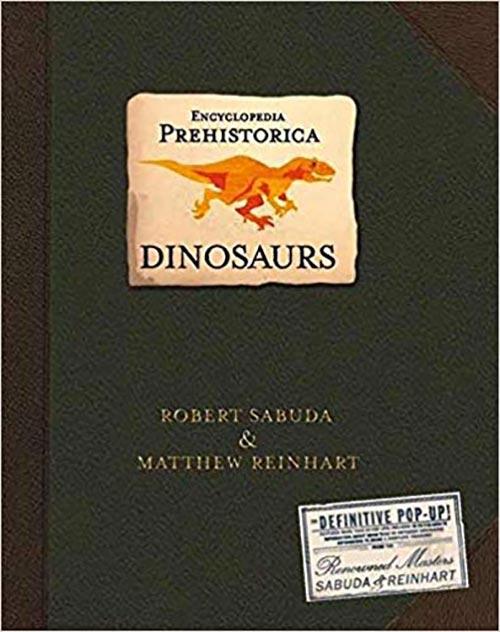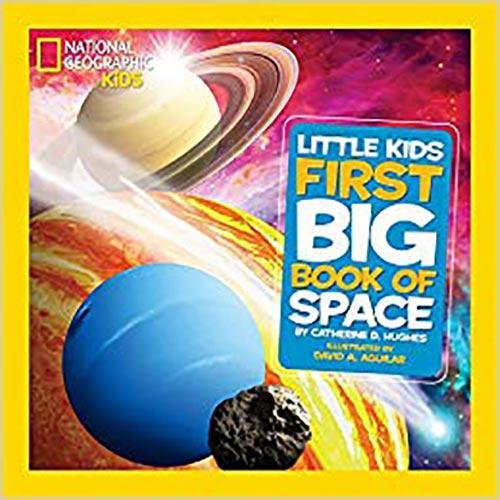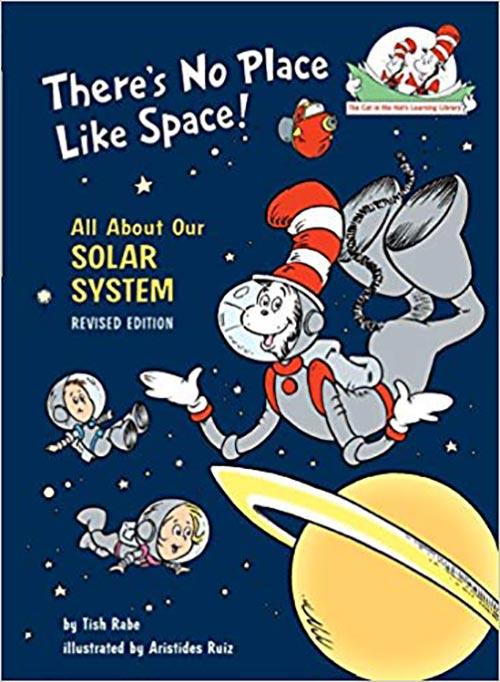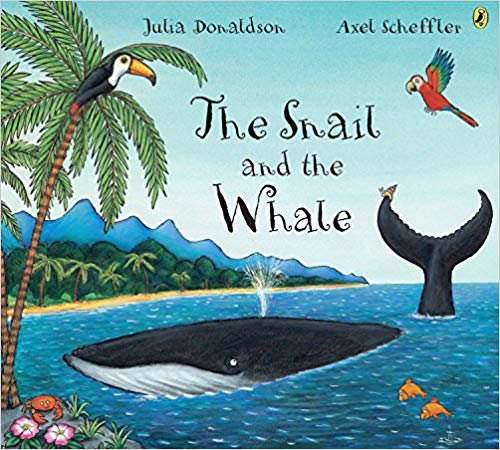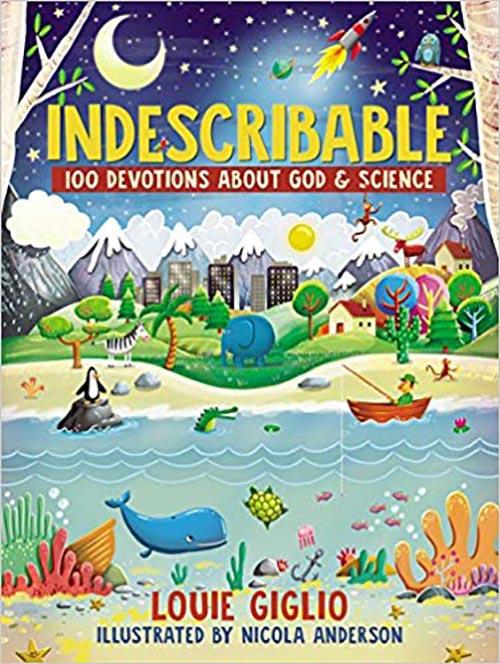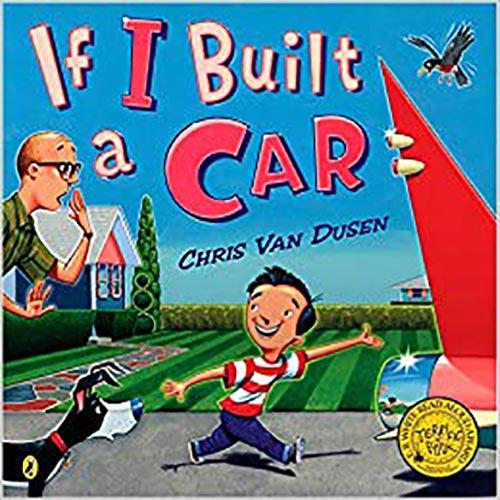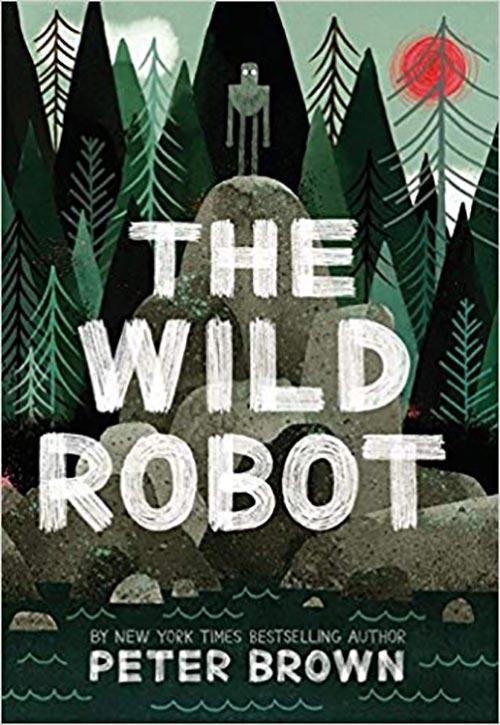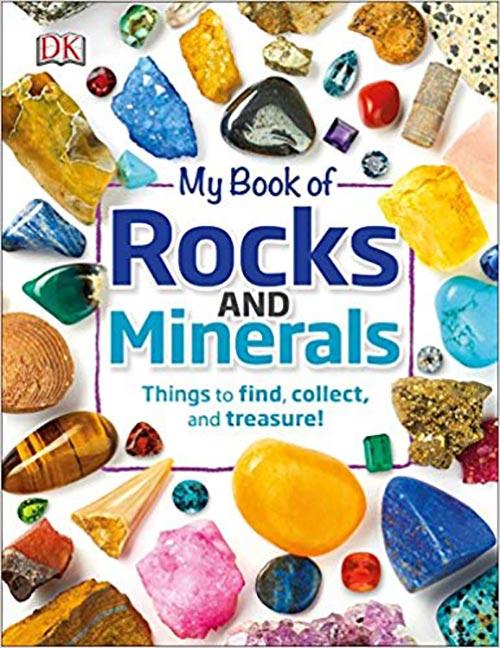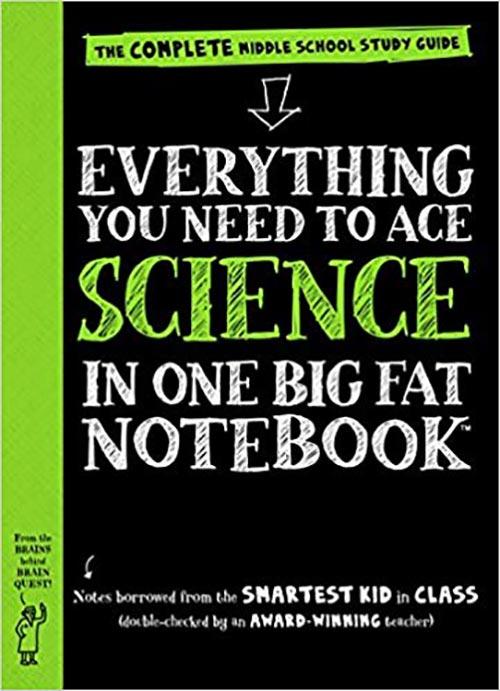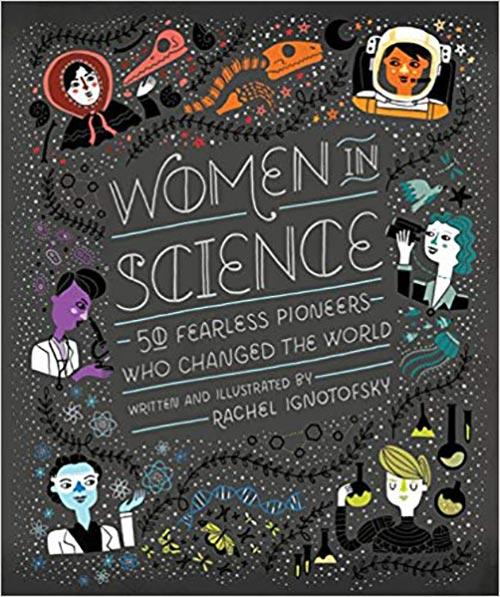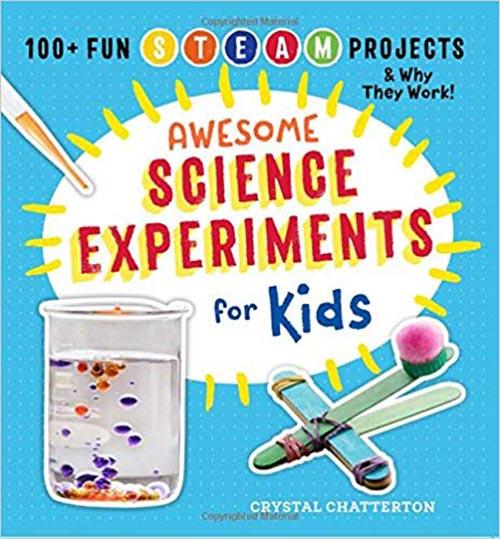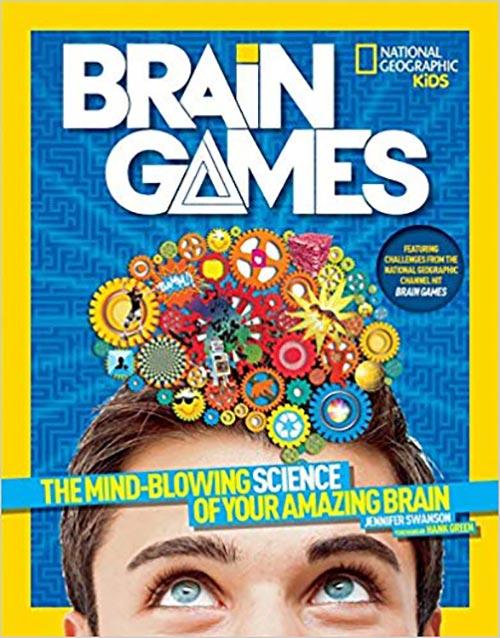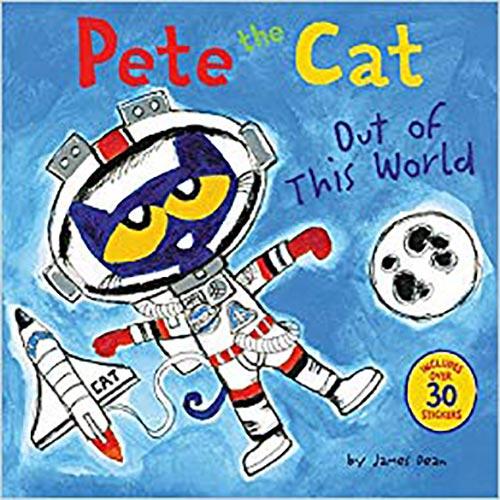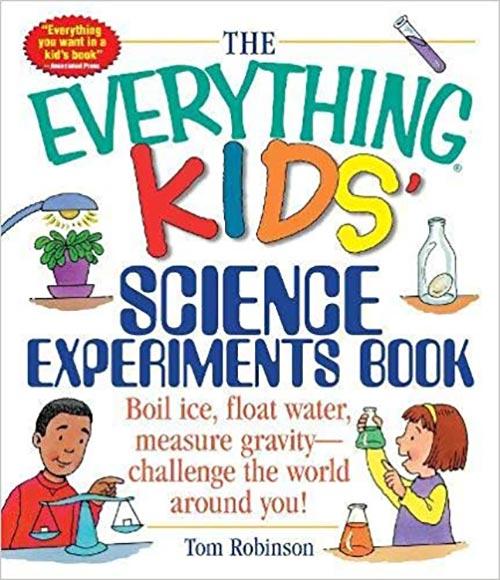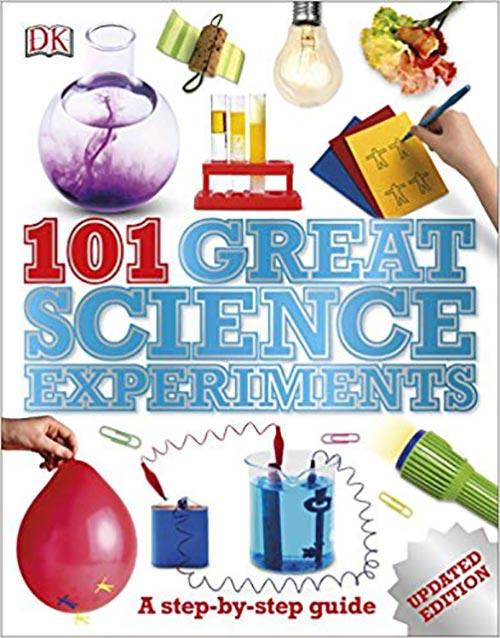
Image: MomJunction Design Team
As your child grows up, they will develop new interests and hobbies all the time. If one of their areas of interest involves science, a great way to nurture it is by exposing them to the best science books for kids.
Not all books are created equal—some are more interactive and easy to learn from, especially if written specifically for kids. Having these books handy will enable your child to get to the bottom of their many “whats” and “whys” while piquing their interest in the subject even more.
Below, we have listed the most engaging science books for children to quench their thirst for knowledge and help them understand the world better.
Top Picks
21 Best Science Books For Kids
1. Best Pop-Up Picture Book:Encyclopedia Prehistorica Dinosaurs: The Definitive Pop-Up
Children find dinosaurs fascinating and are especially excited to learn about those majestic beasts. So imagine how thrilled your child would be when they see images of dinosaurs popping up from a book. The Encyclopedia Prehistorica Dinosaurs: The Definitive Pop-Up is not a regular encyclopedia on dinosaurs.It is a pop-up picture book with colorful images of this pre-historic creature.
作者描述了恐龙“盾者”我n full-body armor and headgear. From the scary T-Rex to the lesser-known herbivorous dinosaurs,this book features them all, with interesting facts and trivia about each one. This reviewvideohelps you know more about the product.
Age: 5 -9 years
Author/Illustrator: Robert Sabuda, Matthew Reinhart
Pros
- Very interactive and interesting
- Includes comprehensive descriptions
- Combination of facts and light humor
- Has both large and small pop-ups
Cons
- Pop-ups may be prone to breaking over time.
Taylor Beal, an experienced English teacher and reading specialist, says,“People might think that scientific concepts are not suited for young children as they can be hard to master. But the earlier one exposes children to the way the world around them works, the faster they can make connections to science.”
 Did You Know?
Did You Know?2. Best Inspirational:Rosie Revere, Engineer
Does your child have a knack for creating something new out of something old, but feels bogged down each time the little experiment fails? Then this book is what you are looking for.
Rosie Revere dreams of becoming an engineer someday and is always engrossed in her experiments. However, people fail to understand her creations and brush them off. So, she does not show her experiments to anyone until her aunt Rose discovers them and applauds even her failed attempts.
With detailed illustrations explained through simple rhyming text in the form of a story,this book offers encouragement for every little future engineer trying to make their experiments successful. Check out thisvideoto learn more.
Age: 5 -7 years
Author/Illustrator: Andrea Beaty (Author), David Roberts (Illustrator)
Pros
- New York Times bestselling book
- Offers life lessons
- Has rich illustrations
- Available as audiobook and kindle version
Cons
- Might be slightly large for children to handle the book on their own
3. Best For Beginners:National Geographic Little Kids First Big Book of Space
Our mesmerizing solar system never fails to draw young minds. However, the difference between the sun, moon, stars, and the various planets can be a tad bit confusing for kids. Science and astronomy are no more confusing when there are colorful, bright images to learn from.
This book is filled with beautiful pictures of our solar system along with information about it. Itcovers the basic concept of space in simple text, so it is easy for children to read, grasp, and understand the peculiarities of the various stars and satellites in space.
Age: 4-8 years
Author/Illustrator: Catherine D. Hughes (Author), David A. Aguilar (Illustrator)
Pros
- Chapterwise explanations for clear distinctions between concepts
- Encourages parent-child bonding
- Written by an award-winning author
- Easy to understand for young children
Cons
- Binding may not be as strong
 Quick fact
Quick fact4. Best For Curious Minds:5,000 Awesome Facts
If your child is curious about every single thing that he comes across, then it is best to invest in a book that satiates that curiosity with interesting information about various topics.
From ants to sharks, toys to robots, history to geography, this book contains facts about all the topics that probably ever intrigued your child. Colorful, bright images with simple text make it easy for kids to read and understand even the most complex topics.
Age: 8-12 years
Author: National Geographic Kids
Pros
- Covers a range of topics
- Keeps children hooked
- Offers learning experience
- Pictures help retain facts in memory
Cons
- Too many facts for some children to remember
5. Best Informative :There’s No Place Like Space: All About Our Solar System
If you are looking for astorybook that is interesting to read and informative, then why look at any other book. This one here is what you need.
With the help of fictional characters, this book takes kids on a journey of our solar system. Kids get to learn about the different aspects of the solar system, such as the atmosphere on different planets, comets, meteors, black hole, and so on. The wonderful animated illustrations make it all the more fun to read about different planets and their characteristics.
Age: 4-8 years
Author/Illustrator: Tish Rabe (Author), Aristides Ruiz (Illustrator)
Pros
- Adventurous read
- Both entertaining and informative
- Rhyming sentences for easy memorization
- Colorful illustrations to keep children interested
Cons
- May not be as comprehensive
6. Best For Learning Ocean Animals:The Snail and the Whale
这本书可以让你的孩子explore the ocean and the amazing creatures that thrive in it, but without having to leave the comfort of their room.
This book traces the adventures of a snail and a humpback whale who set out to explore the world through the ocean. They travel to different places and learn about trust, friendship, and other human emotions through animals. Explained in rhyming text with fascinating images of fishes,this book is engaging and fun to read.
Age: 3-7 years
Author/Illustrator: Julia Donaldson (Author), Axel Scheffler (Illustrator)
Pros
- Written by a bestselling author
- Has colorful, engaging illustrations
- Has several positive messages
- Ideal for bedtime stories
Cons
- Word play may be confusing for some children
 Did You Know?
Did You Know?7. Best With Facts And Data:National Geographic Kids Why?: Over 1,111 Answers to Everything
When your child asks you what is on the other side of a turtle’s shell or why the Earth does not float away in space, do you have an answer? Don’t worry if you don’t. We’ve got you covered! No, don’t google the answer, but give your child this book and save yourself from the questions that your child has for you.
This book has answers to all the common and absurd questions that curious children ask their parents. Science or geography, it tackles questions from all fields. Let your little explorer delve deeper into the world around you to see what lies beyond.
Age: 8-12 years
Author:Crispin Boyer
Pros
- Covers a broad range of topics
- Has various interesting activities
- Ideal for curious children
- Humorous writing style
Cons
- Some parents may not agree with certain facts, such as the theory of evolution
8. Best For Christian Learning:Indescribable: 100 Devotions for Kids About God and Science
This book talks not just about science but also about how God is behind it. It is a good way to introduce both religion and science to the child and how they could be related.
The book suggests how God created this world and has been running it ever since. There are psalms and prayers, along with plenty of information about science.这是一个理想的书children studying in Christian schools.
Age:6-10 years
Author:Louie Giglio
Pros
- Ideal for teaching good morals
- Has interesting illustrations
- Easy to read and understand
- Comes with STEM activities
Cons
- Binding could have been stronger
9. Best Adventurous:If I Built a Car
This book is a car lover’s ultimate dream. It is about a boy named Jack, who has designed his fantasy car taking inspiration from other vehicles. He and his father then set out on an adventure while test-driving this fantastic car.
This book talks about the tools and different parts of a car that will fascinate your young engineer. With exciting illustrations, rhyming text, and of course, cars, this book makes a good read for little children.
Age:3-5 years
Author:Van Dusen, Chris
Pros
- Features fun rhymes
- Promotes imagination in children
- Features intricate artwork
- Ideal for developing interest in reading
Cons
- Pages may not be as thick
10. Best For Understanding Artificial Intelligence:The Wild Robot
Teaching little children the concept of artificial intelligence is not difficult. At least not when you have this book with you.
Covering the life of a robot named Roz, this book discusses topics such as life and death and artificial intelligence through illustrations and quirky scenarios. Through a simple story, children learn a lot about the difference between humans and robots.
Age:8-11 years
Author:Peter Brown
Pros
- New York Times bestseller
- Instills interest in technology in children
- Talks about survival skills
- Entertaining and engaging
Cons
- Mostly black-and-white illustrations
11.My Book of Rocks and Minerals: Things to Find, Collect, and Treasure
Absolutely nothing on our planet is useless. This book contains some astoundingly beautiful high-definition images of rocks, fossils, gems, and minerals hidden in deep caves and even outer space. These images are a fun way to learn more about rocks. This book shares a lot of information about gems and minerals that you might not find anywhere else.
Age:6-9 years
Author:Devin Dennie
Pros
- Familiarizes children with geology
- Comes with interesting illustrations
- Features fun facts
- Offers bite-sized information for easy memorization
Cons
- May not be interesting for all children
12.Everything You Need to Ace Science in One Big Fat Notebook: The Complete Middle School Study Guide
Sometimes studying from a textbook can get very boring, especially if it is a complicated subject. Thus, books like this make studying fun. This book can be used to introduce children to new topics and make it easy for them to understand when they read from the regular textbook.
It contains visually appealing illustrations that help childrenunderstand complicated concepts such as health care, hormones, and puberty.
Age: 11-14 years
Author:Workman Publishing (Author), Michael Geisen (Editor), Sharon Madanes (Contributor), Editors of Brain Quest (Draft Writer)
Pros
- Can be used to supplement school learning
- Covers a broad range of topics
- Includes summaries and highlighted ideas
- Has mnemonics for memorable shortcuts
Cons
- May not offer elaborate explanations
13.National Geographic Little Kids First Big Book of Dinosaurs
Dinosaurs are still a mystery. No matter how much children read about them, they want to know more. So, why not give them what they want?
This book comes with some eye-catching, colorful illustrations of this now-extinct species. It has information related to specific species of dinosaurs. Additionally, it also contains phonetic translations of names of dinosaurs, making it easier for children to identify a type by the name.
Age:4-8 years
Author/Illustrator:Catherine D. Hughes (Author), Franco Tempesta (Illustrator)
Pros
- Covers all types of dinosaurs
- Easy-to-understand texts
- Includes fun facts
- Features age-appropriate information
Cons
- Pages may come out of binding over time
14.Women in Science: 50 Fearless Pioneers Who Changed the World
This is not just a science book but also an inspiration for all budding scientists. It contains information about famous female scientists belonging to different countries. It discusses how they overcame societal pressures and prejudices to work towards their dream of making a substantial contribution to the field of science.
This book is not just informative but also a thought-provoking one that every little child should read.
Age:7-12 years
Author:Rachel Ignotofsky
Pros
- Available in hardcover format
- New York Times bestseller
- Features an illustrated scientific glossary
- Chosen as the greatest science book of 2016 by BrainPickings
Cons
- Some may find the stories lacking adequate details
15.Mistakes That Worked: 40 Familiar Inventions & How They Came to Be
Ever heard of a mistake that went on to become a wonder of the world? Well, this book contains details about a lot of mistakes that went on to become accidental inventions and changed the way people looked at experiments.
A fun-filled book, it contains stories and cute images explaining what exactly went behind each invention, creation, or discovery.
Age:8-12 years
Author/Illustrator:Charlotte Foltz Jones (Author), John O’Brien (Illustrator)
Pros
- Comprehensive explanations about inventions
- Includes interesting illustrations
- Good for bedtime stories
- Suitable for a wide age range
Cons
- Restricts itself to American history of inventions
16.Awesome Science Experiments for Kids: 100+ Fun STEM / STEAM Projects & Why They Work
If your children are not as much interested in science as they should be or if they hate science, then there may be a way to change that. This book is filled with some easy but exciting experiments that can get your children interested or even fascinated by science. The simple and detailed instructions, along with colorful images, help children try out the experiments on their own. It is a great way to teach them difficult scientific concepts.
Age:5-10 years
Author:Crystal Chatterton
Pros
- Teaches hands-on skills
- Easy-to-execute experiments
- Includes colorful photos
- Can supplement school learning
Cons
- Book may have a peculiar smell when new
17.National Geographic Kids Brain Games: The Mind-Blowing Science of Your Amazing Brain
In matters of calculation and memory, nothing can beat the human brain. And this book works towards sharpening your child’s brain.
Filled with brainy puzzles, it also gives solutions and explanations that will amaze your children. The puzzles make them think harder, while the illustrated images make complex theories and ideas simple to follow and understand.
Age:8-12 years
Author:Jennifer Swanson
Pros
- Promotes problem-solving and decision making skills
- Keeps children focused
- Includes fun facts about science
- Can be used in classrooms
Cons
- Some may find it a bit too wordy
18.Pete the Cat: Out of This World
The more you talk about space, the more your children will want to know about it. And when there is a cat on a mission, they are bound to feel curious.
In this book, ‘Pete’ the cat goes to a space camp where he learns about space trips and the different kinds of equipment used or handled by astronauts. It is a good way to educate children about space travel and astronauts.
Age:4-8 years
Author:James Dean
Pros
- Engaging storyline
- Includes over 30 stickers
- Easy to understand
- Can be used for enhancing reading skills in children
Cons
- Some may find the print a tad small
19.Earth! My First 4.54 Billion Years (Our Universe)
This book explains the history of Earth, how it came into being, and how continents were created billions of years ago. Its animated illustration makes it fun to learn about our native planet.
你可以大声朗读这本书给你的孩子,it is explained in a story format. As you read, your child can see the images to understand better. The fun facts included in the book make it all the more interesting for them.
Age:4-8 years
Author:Stacy McAnulty (Author), David Litchfield (Illustrator)
Pros
- First-person narration to keep children involved
- Ideal for bedtime stories
- Comes with child-friendly facts
- Graphics by award-winning illustrator
Cons
- Content may not be as elaborate
20.The Everything Kids’ Science Experiments Book: Boil Ice, Float Water, Measure Gravity-Challenge the World Around You!
Parental guidance or not, children are always excited to learn new things through their own experiments. And if their efforts and interests are properly guided, then it can turn into something educational.
This book contains numerous experiments that will change the way your child looks at regular things around him. With clear, detailed instructions and simple apparatus, they will enjoy creating new stuff.
Age:7-12 years
Author:Tom Robinson
Pros
- Includes rarely known science facts
- Promotes STEM learning
- Has various projects
- Includes different branches of science
Cons
- Some experiments may be time-consuming
21.101 Great Science Experiments: A Step-by-Step Guide
Every child has tried a science experiment at least once in their life. Some stop at one, while for others, curiosity gets the better of them. So, why not give them a book that lets them experiment safely, and also learn from them?
This book includes many interesting and simple experiments that children and adults can do together. It gives detailed instructions for the experiment and is a good way to help children learn something new.
Age:8-12 years
Author:Neil Ardley
Pros
- Interactive book
- Explains major science topics
- Promotes hands-on learning
- Experiments are safe for little ones
Cons
- May require items for experiments that aren’t household or easily available
How To Choose The Right Science Books For Kids?
Here are the factors to consider while looking for science books for kids.
- Author: Ensure the book’s author is someone from a science background – a researcher, scientist, or teacher. It will help you find a book that is factually correct and explained adequately for your child’s easy understanding.
- Image and text descriptions: Choose books with bright illustrations and large fonts so children can read easily and stay engaged.
- Theme: From fun experiments to dinosaurs, different science books cover different topics. So, consider your child’s interests and choose books accordingly to ensure your child has a fulfilling learning experience.
Why Trust MomJunction?
Wedetso Chirhah is experienced in choosing suitable books for different age groups. In this post, he selected science books ideal for children with interesting illustrations that kids can find fascinating. These books are easy to read and understand and include updated information to satiate your child’s curiosity. He has also described briefly why the book is worth reading so you can pick the most suitable books.
科学是我们生活的一个组成部分,而当you get a science book for your little ones, they develop an interest and fascination for it from a young age. Children learn best when the books they read have visual representations and illustrations. It is also crucial that the book is easy to read and understand to grab your child’s attention. Science books focus on different areas, so you can consider your child’s interests and pick a book that they will enjoy.
Infographic: How To Ignite Your Child’s Interest In Science?
Encouraging children to explore and learn science at home enhances their understanding of the world, strengthens foundational knowledge, and fosters skills such as observation, deduction, and trial and error. Check the infographic below for effective strategies to improve the child’s interest in science.

Illustration: Momjunction Design Team
Get high-quality PDF version by clicking below.
Download Infographic
References:
- 恐龙事实|美国自然Histor博物馆y.
https://www.amnh.org/dinosaurs/dinosaur-facts - Exploring the Universe- NASA- Facts
https://www.nasa.gov/facts/Universe/index.html - 10 Wonderful Whale Facts | NOAA Fisheries
https://www.fisheries.noaa.gov/feature-story/10-wonderful-whale-facts#:~:text=Massive%20Marine%20Mammals



